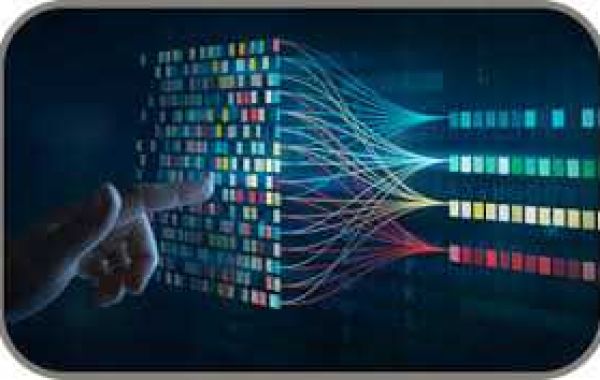As the retail sector increasingly adopts IoT technologies, its applications have the potential to revolutionize how businesses interact with customers and manage their operations. In this article, we will explore the key benefits and applications of IoT in retail.
Key Benefits of IoT in Retail
Enhanced Customer Experience One of the most significant advantages of IoT in retail is its ability to enhance the customer experience. Retailers can use IoT-enabled devices to gather valuable insights into customer behavior, preferences, and shopping patterns. For example, smart shelves can detect when a product is low in stock, automatically triggering restocking notifications. Additionally, IoT can enable personalized shopping experiences, such as sending targeted promotions or product recommendations directly to customers' smartphones based on their previous purchases or location within the store.
Furthermore, IoT-powered sensors and beacons can help retailers track customer movement within a store, offering a deeper understanding of which areas attract the most traffic. This data can be leveraged to optimize store layouts and product placements, ultimately leading to improved sales and customer satisfaction.
Inventory and Supply Chain Management One of the most impactful applications of IoT in retail is in inventory and supply chain management. Retailers can deploy IoT sensors to track inventory in real time, reducing the risk of stockouts and overstocking. For instance, RFID tags or smart shelves allow for automated stock monitoring, ensuring that the right products are available in the right quantities at the right time.
Additionally, IoT can streamline the entire supply chain, offering visibility at every stage, from manufacturing to distribution. Retailers can monitor the condition and location of goods in transit, ensuring the safe delivery of products and reducing the risk of spoilage or damage. This level of precision in inventory management not only reduces operational costs but also enhances the customer experience by ensuring product availability.
Operational Efficiency and Cost Reduction IoT helps retailers automate several processes, leading to improved operational efficiency and cost reduction. For example, smart energy management systems can monitor and control lighting, heating, and cooling in stores, leading to significant reductions in energy consumption and operational costs. Similarly, IoT-enabled predictive maintenance tools can monitor equipment like refrigerators or HVAC systems, alerting store managers to potential issues before they result in costly repairs or downtime.
Retailers can also leverage IoT to optimize staff allocation based on foot traffic data. By analyzing customer flow, retailers can schedule employees during peak times, ensuring a smooth customer experience without overstaffing.
Improved Security IoT devices are also playing a critical role in enhancing security within the retail industry. With the proliferation of smart cameras, surveillance systems, and sensors, retailers can monitor their stores in real time, helping to prevent theft, fraud, and vandalism. IoT-enabled security systems can detect unusual activity and immediately alert store managers or law enforcement, ensuring a quicker response time.
Furthermore, IoT can help with customer authentication and payment security. Biometric systems, such as facial recognition or fingerprint scanning, are becoming increasingly popular in retail for providing secure and convenient customer identification, reducing the risk of fraud.
Applications of IoT in Retail
Smart Shelves and Automated Inventory Tracking IoT-based smart shelves are a game-changer in retail, enabling stores to keep track of product stock levels in real time. These shelves are equipped with sensors that automatically detect when products are running low, helping to ensure that shelves are always stocked and ready for customers. This system reduces the need for manual stock checks and improves the accuracy of inventory management.
Beacons and Proximity Marketing Retailers are increasingly using beacons to engage customers through proximity marketing. By sending location-based notifications to customers' smartphones, retailers can offer personalized discounts, product recommendations, and promotions when they are near specific items or sections in the store. This targeted marketing technique not only improves the shopping experience but also boosts sales by prompting impulse purchases.
Smart Fitting Rooms IoT is also transforming the fitting room experience in retail stores. Smart fitting rooms are equipped with sensors and digital displays that allow customers to request different sizes or colors of clothing without leaving the room. Additionally, these rooms can be integrated with customer profiles, enabling personalized recommendations based on the shopper’s preferences and past purchases.
Connected POS Systems Point-of-sale (POS) systems are becoming smarter with IoT integration. Retailers can gather real-time data on transactions, customer preferences, and product performance, which can be used to make data-driven decisions. Connected POS systems also help retailers streamline checkout processes, reducing wait times for customers and improving the overall shopping experience.
Conclusion
IoT in retail is revolutionizing how businesses interact with customers, manage operations, and optimize their supply chains. With its ability to enhance customer experiences, improve inventory management, reduce operational costs, and improve security, IoT is quickly becoming an indispensable tool for modern retailers. As the technology continues to evolve, the possibilities for IoT in retail are endless, promising even more opportunities for growth, innovation, and customer satisfaction. Embracing IoT technology is no longer just a competitive advantage—it’s a necessity for staying ahead in today’s fast-paced retail landscape.







